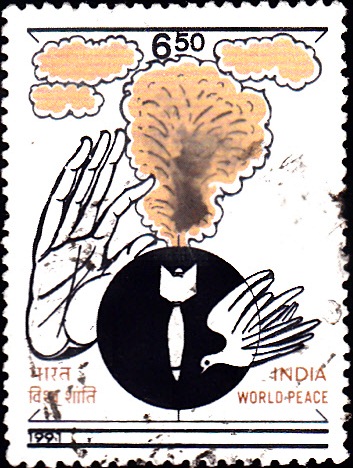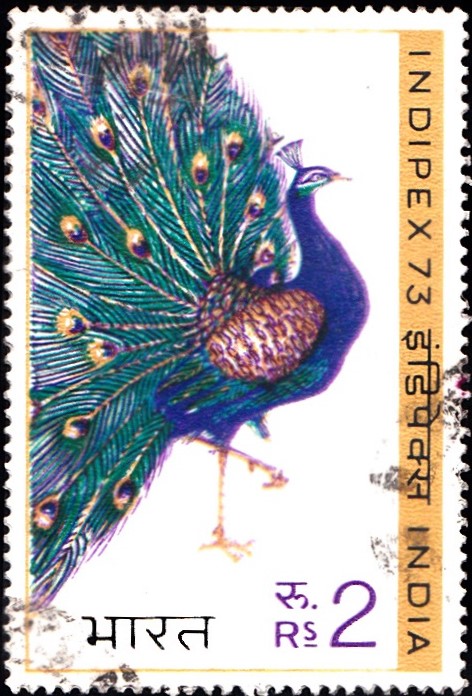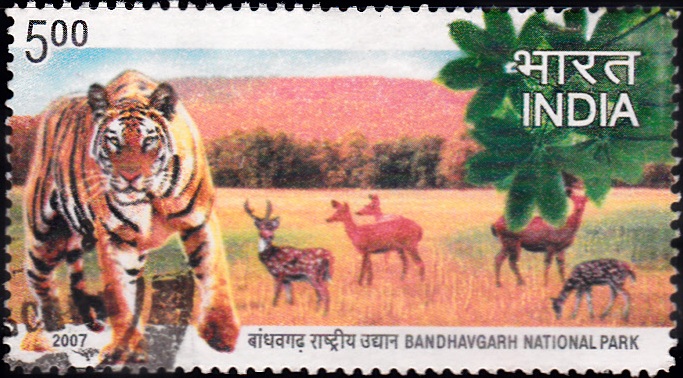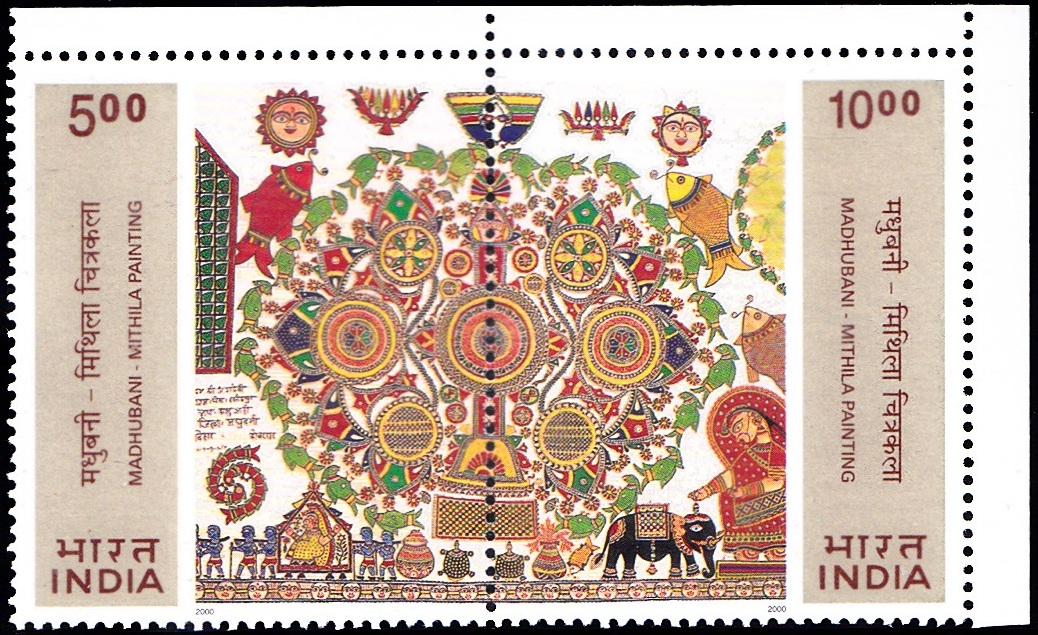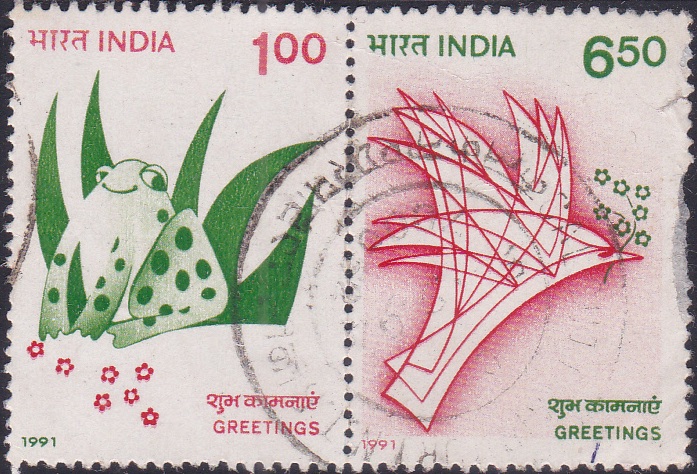
India Greetings 1991
Complete Set of 2 nos of postage stamps on the Greetings :
 Issued by India
Issued by India
Issued on Sep 30, 1991
Issued for : To strengthen the spirit of such greetings and to make the message more eloquent, the Department of Posts is issuing a set of two setenant stamps on the theme of greetings.
Description of designs : The two stamps in the denominations of 100 P and 650 P as well as the First Day Cover have been designed by Ms. Bharti Mirchandani. The cancellation has been designed by Ms. Neenu Gupta.
Type : Se–tenant pair of 2 Stamps, Postal Used
Colour : Two Colour
Denomination : 100 & 650 Paise
Overall size : 3.91 x 5.80 cms.
Printing size : 3.55 x 5.43 cms.
Perforation : 13 x 13
Paper : Indigenous Un W/M P.G. coated Gummed Stamp Paper
Number Printed : 10,00,000
Number per issue sheet : 30
Printing Process : Photogravure
Printed : India Security Press
About :
- Whatever the occasion, the exchange of greetings has today become a very common phenomenon. Apart from conveying greetings on specific occasions, it is now becoming a part of day to day etiquette in most countries to convey greetings at the beginning and end of almost every interaction between two humans. While such greetings can be conveyed through any medium of communication, there is little doubt that the greeting card usually sent by post is increasingly becoming the most popular form for exchange of greetings. The greeting card is an illustrated message that expresses, seriously or humourously, friendship, love, affection, goodwill, gratitude, sympathy or almost any other sentiment.
- However, the exchange of illustrated greetings between friends has been recorded from ancient times. The expression of seasonal greetings in Rome was symbolised by exchange of Roman Lamps impressed with the figures of victory surrounded by strenae inscribed “Anno novo faustum felix tibi sit” (May the new year be happy and lucky for you). Even in ancient Egypt, New Year was celebrated through an exchange of such symbolic presents as scent bottles and scarabs inscribed “au ab nab” (all good luck).
- In India too, as in the rest of the world, we send greetings on occasions of Indian festivals like Deepavali, Baisakhi, Dussehra, Pongal, Christmas, Bihu and Id, besides other personal occasions. The post remains the most popular and predominant mode of transmission of the cards and letters containing these messages of greetings.
- The greetings stamps, first introduced in India in 1990, are designed to complement the card or letter inside the envelope. Although the designs are not tied to specific occasions, they add greater poignancy to message to friends and loved ones at special moments in their lives. What is more, the small, but important effort involved seldom fails to be appreciated for the extra care and concern it demonstrates.
- The message may be for a birthday or an anniversary, a religious festival or a social occasion. It may be an expression of love or of gratitude. It may be to offer congratulations, in time of success, or comfort in time of illness. Whatever the occasion, greetings stamps enhance ‘social mail’ by adding an extra dimension to thoughts expressed to loved ones. The written word, whether in a letter, greetings card or even just a short note, really does take on a very special meaning on such occasions. What the greetings stamp does is to signal that meaning clearly and to highlight its welcome presence, especially among other, more impersonal mail.


